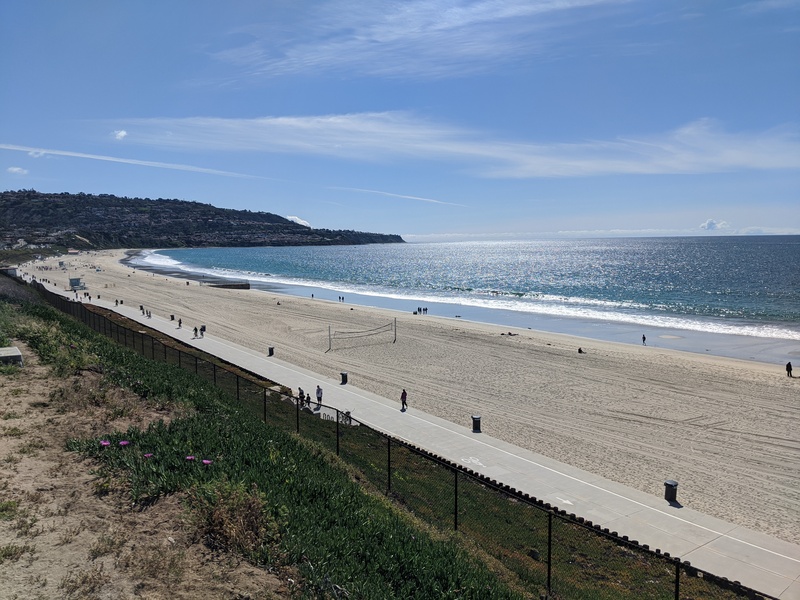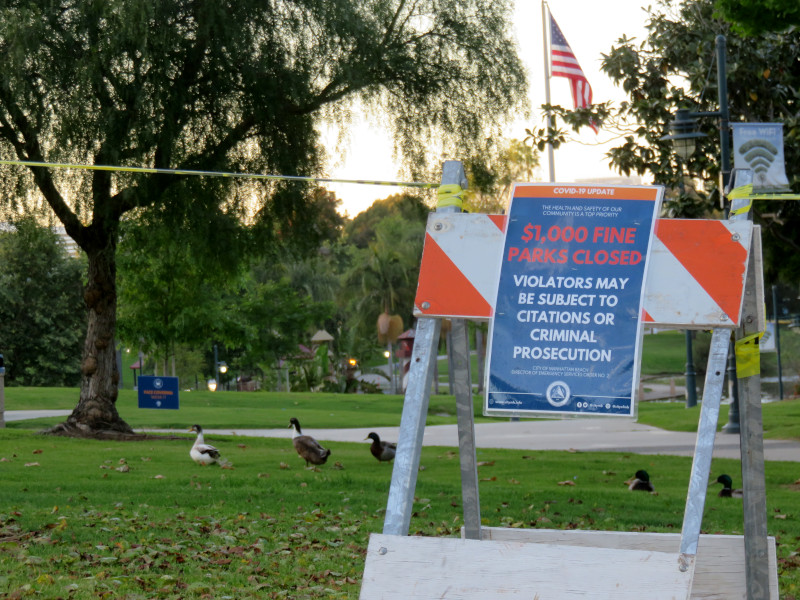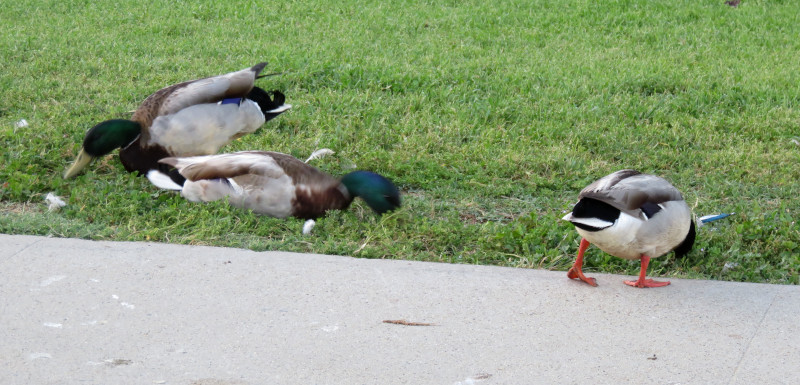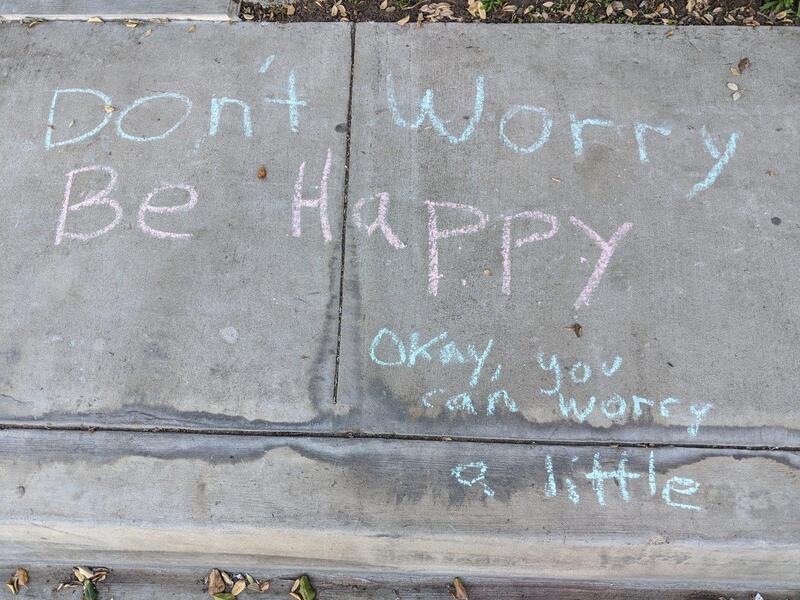Author Archives: Kelson
…Or Was It?
With more symptoms being added to the list for Covid-19, I’m beginning to think I should have gone in for a flu test when I had the flu at the beginning of March. At the time, chills, muscle aches and headache (and lack of coughing) seemed like a clear “not Covid” indicator. I was staying home anyway — I didn’t want to give anyone the flu, either. And I figured as long as it was treatable with home care, I wouldn’t waste time and doctors’ resources on a flu test to tell me what I already knew. Or thought I did.
Not that I would have been able to get a Covid-19 test, even if the flu test turned out negative. This was about a week before California started locking things down. Tests were still in short supply. I hadn’t traveled to China or Italy, or been in close contact (as far as I knew, anyway) with anyone who had. I wasn’t coughing or short of breath. All I had was the fever and a bunch of other flu-like symptoms that weren’t recognized as Covid-related.
That said, one key piece of evidence still points to the flu: I managed not to give it to anyone else in my family.
We kept our distance, washed our hands a lot, and made sure I didn’t cough or sneeze at anyone or on anything. But we continued to share space in the apartment.
See, in a small apartment you can’t do the level of isolation that a lot of articles have suggested. I wasn’t locked in a red zone alone. Food wasn’t delivered furtively, with a mask and gloves that were immediately dropped as soon as the door closed. We didn’t disinfect everything as it left the room.
If it had been Covid-19, everyone else would have gotten it too. Especially since I would have already been contagious for at least a week before symptoms hit.
But it would be nice to know for sure.
The Last Normal Weekend
I found myself thinking back to the last “normal” weekend in southern California before it became clear that covid-19 was spreading locally and closures started. After a busy Saturday and Sunday morning, I went out for a calming photo walk at the beach.
Not many people were there. I’m not sure if it was just not warm enough yet, or people were starting to keep their distance already, or if they were just all at the other end where there was a kite festival.
The beach is closed now, along with the bike path and the sidewalk I was standing on. ALL of Los Angeles County’s beaches are closed.
Neighboring Ventura County just re-opened some of theirs with distancing rules in place, and while Orange County has resisted closing their beaches, they had so many people show up at the coast this weekend that some cities are thinking about closing them after all. (Well, maybe only on weekends when non-locals might show up. 🙄 )
No Ducks Past the Yellow Tape!
 While some cities around here have only closed playgrounds and sports facilities at their parks, Manhattan Beach has closed their parks outright. Polliwog Park has a large pond year-round that attracts ducks, geese, coots, herons and more, plus the local gulls and pigeons that wander by. But the park has been literally wrapped in caution tape for a month, and the ducks that normally stay in and around the pond have come out to the edges by the sidewalks — where people can still walk by and feed them.
While some cities around here have only closed playgrounds and sports facilities at their parks, Manhattan Beach has closed their parks outright. Polliwog Park has a large pond year-round that attracts ducks, geese, coots, herons and more, plus the local gulls and pigeons that wander by. But the park has been literally wrapped in caution tape for a month, and the ducks that normally stay in and around the pond have come out to the edges by the sidewalks — where people can still walk by and feed them.
On a related note: iNaturalist’s City Nature Challenge for 2020 is underway. You can join the project to photograph the wild animals, plants, fungi and other lifeforms you see around your home or neighborhood (depending on how far you can roam in your area) this weekend. I’ve already posted the ducks, as well as a finch, some phoebes, a blackbird, a wasp, and a bunch of random plants found in the yard. Well, weeds, anyway, but the whole point is to post (and later identify) the wildlife in the area.
(And yes, you can obscure the location info. When I’m at or near home, I mark a wide circle around a major intersection and choose the “obscured” option, which further hides it from anyone but project admins and curators.)
Theater for Nobody
This is fascinating: A college theater production of Sophocles’ “The Women of Trachis,” a rarely-performed Greek tragedy, was interrupted by the pandemic. It’s been transformed into a one-night only automated performance featuring video clips of the actors (each sheltering in place at home), collected by TikTok and iMovie and assembled by the director to be shown in an empty theater.
As director Michal Zadara puts it, “It’s theater for nobody.” It’s kind of mind-bending in the way it makes you think about the very nature of performing arts and stories — and more, the kind of story it is.
No one on stage.
No one in the audience.
A tragedy that no one will see.
Wait, What Hands?
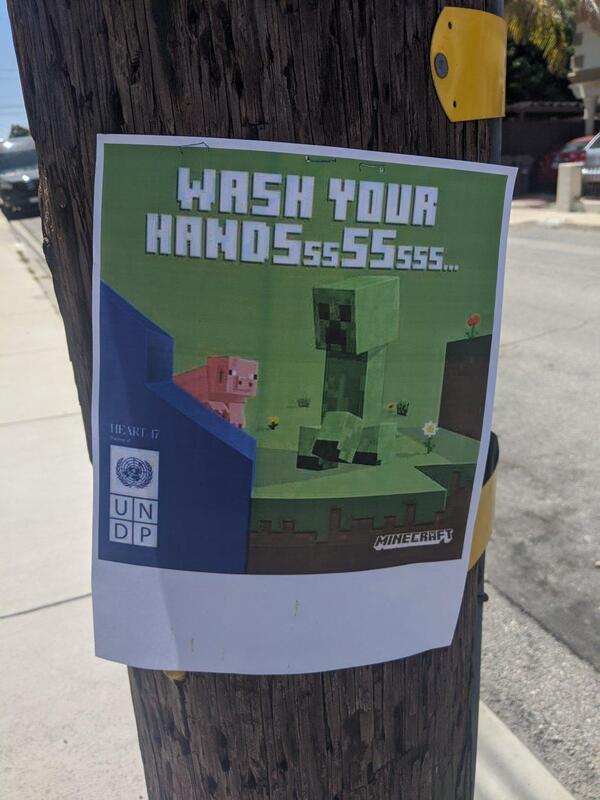
Kiddo found this image somewhere and wanted to put up a few signs.
Chalk it up to Social Distancing
Spotted on a walk around the neighborhood yesterday.
Actually I’ve been seeing a lot of sidewalk chalk messages lately, some written by adults, others clearly written by kids. Starting about a week into the shutdown, when I went out for a walk and found a note from one of the kiddo’s former classmates saying hello. As I walked around the block, I found more notes to other kids – clearly he’d left them at every house where he knew someone. Since then I’ve seen drawings, birthday greetings, stay safe messages, and more.
It’s sort of like texting without phones.

